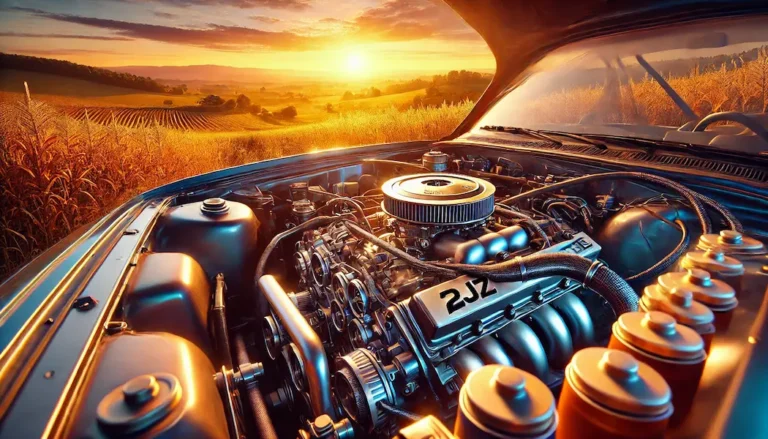Mazda Cars with Rotary Engine: A Deep Dive

Key Takeaways
- Mazda’s Rotary Engine Legacy: Mazda set itself apart with rotary engines, creating a unique space in automotive history.
- The RX Series: Cars like the RX-7 and RX-8 helped make rotary engines famous, turning them into icons in the car world.
- Advantages and Challenges of Rotary Engines: Rotary engines are small yet powerful but face challenges like reliability and poor fuel efficiency.
- Future of Rotary Engines: While rotary engines are no longer in production, Mazda is still exploring ways to use them in hybrid systems and future cars.
Introduction
Mazda’s rotary engines are fascinating. While most car manufacturers stuck with traditional piston engines, Mazda took a different route by embracing the rotary engine. This bold move not only made them stand out but also created a lasting legacy in the automotive world. The uniqueness of the rotary engine makes it more than just a part of Mazda’s history—it’s a symbol of their innovation and willingness to break from the norm. This article is about more than just the technical history of these engines; it’s about why these cars are so special and what makes them stand out to me.
The Origins of Rotary Engines
The rotary engine, or Wankel engine, was invented by Felix Wankel in the 1950s. Unlike the piston engine, which uses multiple moving parts, the rotary engine uses a triangular rotor that spins inside an oval chamber. This motion turns pressure into smooth, continuous energy.
Mazda, under the leadership of Kenichi Yamamoto, was the first to fully embrace the rotary engine and make it their own. Instead of just using the engine, they faced its challenges head-on, innovating continuously to improve it. The result was the release of their first rotary-powered car, the Cosmo Sport 110S, in 1967, which marked the start of Mazda’s bold journey with rotary engines.
The First Rotary Engine Mazda: Cosmo Sport 110S
The Cosmo Sport 110S wasn’t just Mazda’s first rotary car—it was a statement. Released in 1967, over 50 years ago, it still looks futuristic by today’s standards. Powered by a 982cc twin-rotor engine, the Cosmo Sport 110S produced 110 horsepower, showcasing Mazda’s impressive engineering capabilities.
For me, the Cosmo Sport 110S symbolizes Mazda’s courage to push boundaries. It wasn’t just about building a car—it was about creating something that would excite car enthusiasts for years to come.
The Mazda RX Series
- Mazda RX-2 and RX-3
These models made rotary power more accessible to the public. They were affordable yet still delivered that exciting rotary engine sound. The RX-2 and RX-3 provided a unique driving experience, characterized by the unmistakable hum of the rotary engine. - Mazda RX-4
The RX-4 added more power and refinement, offering a more comfortable, luxury-oriented take on rotary performance. It was for drivers who still wanted the thrill of rotary power but in a more polished package. - Mazda RX-5 (Cosmo)
The RX-5, or Cosmo in Japan, is a luxury model that blends rotary power with sophistication. It represents another side of Mazda’s rotary ambition, where performance meets elegance. - Mazda RX-7
The RX-7 is one of Mazda’s most iconic cars, with a lightweight design and perfect balance that made it one of the most fun cars to drive. The RX-7 went through several generations, with the FD being a personal favorite, featuring a twin-turbocharged rotary engine. This car remains a favorite among tuners and racers alike. - Mazda RX-8
The RX-8, with its innovative rear-hinged doors and a 1.3L naturally aspirated rotary engine, represented the final chapter of the RX series. It was a reminder of the strengths of the rotary engine, but also the challenges that ultimately led to the end of rotary engine production.
Rotary Engines in Motorsports
Mazda didn’t keep their rotary engines only for street cars; they took them to the racetrack as well. One of their most significant achievements came in 1991 when the Mazda 787B won the 24 Hours of Le Mans. This victory proved that rotary engines could compete at the highest levels of motorsport and solidified Mazda’s legacy as an innovator.
The Technical Aspects of Rotary Engines
Rotary engines work differently from traditional piston engines. Instead of pistons, they use a triangular rotor that rotates inside an oval-shaped chamber. This design allows for a smoother power delivery and a better power-to-weight ratio. However, the rotary engine does face challenges:
- Advantages: Compact and lightweight, smooth operation, high power output for its size.
- Disadvantages: Lower fuel efficiency, higher emissions, and reliability issues due to the sealing mechanisms.
Despite these challenges, Mazda continuously improved the rotary engine’s design, especially focusing on better sealing techniques and material advancements.
Challenges Faced by Rotary Engines
The rotary engine faced some significant hurdles. Issues like apex seal wear, lower fuel efficiency, and higher emissions made it difficult for Mazda to keep up with the demands of modern automotive standards. These problems, combined with a shift toward more reliable and efficient piston engines, led to the discontinuation of rotary engines in mainstream cars.
However, Mazda’s effort to push through these difficulties is admirable. The challenges the rotary engine faced make its place in automotive history even more special.
Mazda’s Concept Cars Featuring Rotary Engines
- Mazda RX-500
The RX-500 was a futuristic concept car that showcased Mazda’s vision for the future of rotary-powered vehicles. With a mid-engine layout and radical design, the RX-500 remains a symbol of Mazda’s forward-thinking attitude. - Mazda Furai
The Mazda Furai concept was designed to push the boundaries of automotive technology with its sleek looks and rotary-powered engine. Though it never made it to production, the Furai left a lasting impression on car enthusiasts and highlighted Mazda’s potential for future innovation. - Mazda RX-Vision
Unveiled in 2015, the RX-Vision concept car represents Mazda’s commitment to keeping the rotary dream alive. Its design and promise of a next-generation rotary engine sparked hope that Mazda might bring back the engine in future cars, especially in sports models.
The Future of Rotary Engines at Mazda
Although the RX-8 marked the last of Mazda’s rotary cars, the company hasn’t completely abandoned the technology. They are exploring the use of rotary engines in hybrid systems, where the rotary could serve as a range extender for electric vehicles. This is an exciting possibility, as it combines the old with the new, and could bring the rotary engine back in a modern, eco-friendly form.
Case Studies: Iconic Mazda Rotary Engine Models
- Mazda RX-7
The RX-7 is the most iconic rotary-powered car Mazda has ever produced. With over 800,000 units sold and a legacy that spans three generations, it’s a car that has become a symbol of Mazda’s innovation. The RX-7’s appearances in movies, video games, and car enthusiast communities only cement its legendary status. - Mazda RX-8
While not as iconic as the RX-7, the RX-8 still holds a special place in Mazda’s history. Its unique design and modern take on the rotary engine make it a must-see for any rotary enthusiast.
The Cultural Impact of Mazda’s Rotary Engines
Mazda’s rotary engines, particularly in the RX-7, have had a huge impact on car culture. The RX-7 is a symbol of Mazda’s commitment to performance and individuality, inspiring fans and car enthusiasts around the world. Mazda’s marketing has always emphasized the passion behind their rotary engines, helping them connect with fans and ensure the legacy of the rotary engine lives on.
Conclusion
Mazda’s journey with rotary engines is a story of innovation, passion, and risk-taking. Even though rotary engines are no longer in mainstream production, they’ve left a lasting impact on the automotive world. Mazda continues to explore ways to bring rotary engines back, especially in hybrid applications. If you haven’t experienced a Mazda rotary car, I highly recommend doing so—it’s a unique part of automotive history that’s well worth discovering.
Frequently Asked Questions (FAQs)
How reliable are rotary engines compared to traditional engines?
Rotary engines have historically been less reliable than piston engines due to issues with sealing, fuel efficiency, and emissions. However, Mazda has made improvements over the years to enhance durability and performance.
What is a rotary engine, and how does it differ from a piston engine?
A rotary engine uses a rotating triangular rotor instead of pistons. This design leads to smoother operation and a higher power-to-weight ratio but also faces challenges like lower fuel efficiency and reliability issues.
Why did Mazda stop making rotary engine cars?
Mazda stopped making rotary engine cars because these engines couldn’t meet modern emissions standards and weren’t as fuel-efficient as traditional piston engines.
Will Mazda bring back rotary engines in future models?
Mazda is still researching rotary engine technology, particularly in hybrid and range-extender applications, so there’s hope they may bring back rotary engines in future sports cars.
What are the advantages of rotary engines?
Rotary engines are compact, lightweight, and have fewer moving parts than piston engines, which results in smoother operation and higher power output relative to their size.
Thanks for checking out this article on EngineEcho.com! Hope you found this article: "Mazda Cars with Rotary Engine: A Deep Dive" helpful! If you liked it and want to dive into more car engine topics, head over to our homepage. There's always something new to discover in the world of engines. Enjoy your reading journey!
Check out our previous article: Cars with W12 Engine: High-Performance Models






